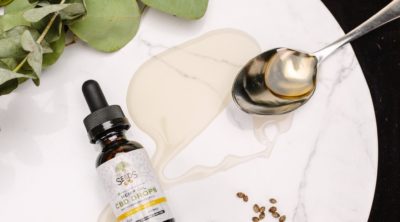
Are you amazed to hear that mint, a popular herb used in almost every type of cuisine around the world has certain adverse health effects? Well, it is right. Although, well-known for its high medicinal value and rich flavor, mint if consumed in excessive quantities, may cause mild to severe health problems.
It is said that consuming any food item in the right quantity is advantageous, but over-eating of the same can be harmful. Every food item has some pros and cons. Since mint has been around for a long time because of its medicinal value, its side effects are overlooked. It is a herb which is useful in many areas, but it is harmful if consumed in excess.
Does Eating too much Mint have Side Effects?
Though mint is a widely used herb, it is safe only when consumed in small amount and for a short duration. Mint leaves are used in preparing mint tea, one of the most popular herbal teas consumed worldwide. It has been used for several years due to its various health benefits. It cures indigestion. The potent smell of mint helps to relieve headache as well. But consuming the tea excessively can cause various health problems. Drinking peppermint tea can cause skin irritation, flushing (reddening of the skin), headache, irritated mucous membrane and heartburn. Menthol is one of the active chemicals in the tea, and can cause throat closure in small children and adults. A person who has asthma should avoid the use of food products containing mint because it aggravates the condition by causing difficulty in breathing. Women who are pregnant or nursing a baby should strictly avoid consumption of mint tea. Taking mint tea during pregnancy may lead to a miscarriage. Applying peppermint oil on a child’s face can lead to severe breathing problems.
Mint and its Characteristics
The word mint is derived from the Latin word herba, which means green crops. It belongs to Lamiaceae (mint family) and is native to Australia, Europe, Asia and North America. Leaves, seeds and flowers are the parts of the plant that are used in flavoring food as well as in medicine. It is also very rich in its nutritional value, since it contains many vitamins (A, B2 and C), and minerals which are vital for good health. It belongs to the fragrant family of herbs and has medicinal and culinary uses.
Peppermint
Peppermint, also known as mentha piperita has an authentic minty smell which is obtained by rubbing its leaves. These leaves are dried and used to prepare mint tea. Since ancient times, peppermint has been used as a breath freshener. It is found in chewing gums, mouth wash, soaps, sweets, balms, creams, etc., that us a refreshing fragrance. The main constituents in peppermint that are responsible for its aroma are menthol and menthyl.
Spearmint
Spearmint is also called mentha spicata. The leaves are dark green in color, oval-shaped with pointed ends. This herb contains essential menthol oil, but not in high amounts as it is contained in peppermint. It has a milder flavor than peppermint, and hence can be used in regular cooking. It can be added to sauces, dressings and cakes. Chopped leaves can be added to salads.
Other varieties of mint are bergamot/ lemon mint, catnip/ catmint, basil, ginger mint, chocolate mint (used in desserts), garden mint (used in regular cooking), and pineapple mint (used in salads and desserts).
Recommended Dosage
To avoid negative effects of mint, one should take it in recommended dosage. Both peppermint and spearmint are available in capsules, tonic, tea and oil form. Experts discourage use of spearmint and recommend peppermint instead. Following are the prescribed doses for peppermint:
As Tea: Soak 1 tsp of dried peppermint leaves in a cup of boiling water for at least ten minutes and cool it. Drink this two to three times daily between meals.
As Capsules: Take 1 to 2 capsules three times per day to cure irritable bowel syndrome.
As Oil or Ointment: Apply cream or ointment containing the active menthol to treat skin irritation and itching.
As Spirit (tincture): It is useful to treat headache caused by tension. Take the tincture containing about 10% peppermint oil and about 90% ethanol, and apply it gently on the forehead. Allow the tincture or spirit to evaporate.
Consumption of mint in the right quantity is crucial to gain the benefits of this herb and avoid its side effects. Follow the above doses recommended by experts and avoid its negative effects. Have a healthy and happy life!


